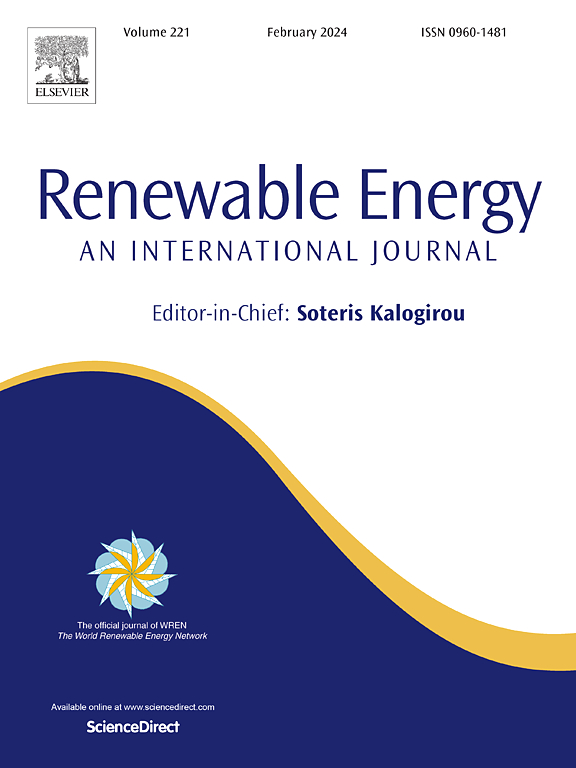光伏发电出力预测的动态气象相关综合混合方法
IF 9.1
1区 工程技术
Q1 ENERGY & FUELS
引用次数: 0
摘要
随着光伏发电系统大规模并网,准确的光伏发电出力预测对保证电网安全稳定运行至关重要。由于气象因素复杂多变,且气象因素与光伏发电产量的动态关系不明确,山区光伏电站的准确预报面临重大挑战。在保证预测精度的同时,还需要考虑实际工程部署中遇到的计算成本。在此基础上,提出了一种动态气象相关综合混合方法。首先,通过相关分析,识别优势气象因子,实现计算降维,量化气象因子与光伏产量的相关强度,探索其动态相关规律。然后,将这些动态相关规则整合到混合预测模型的损失函数中,采用交替训练的方式实现时间识别模块与XGBoost的协同训练。最后,在横断山区某光伏电站对该混合方法进行了验证和评估。结果表明,与基线模型相比,在丰湿季、旱季和正常季等复杂多变的气象条件下,该方法在7天和10天的预测范围内R2均在0.95以上,RMSE降低幅度在10% ~ 30%之间。这证明了混合模型具有良好的预报精度,为其他气象因素复杂地区提高光伏产量预报精度提供了有价值的参考。本文章由计算机程序翻译,如有差异,请以英文原文为准。
A dynamic meteorological correlation integrated hybrid method for photovoltaic output forecasting
With the large-scale integration of photovoltaic (PV) systems into the power grid, accurate PV output forecasting is crucial to ensure the safe and stable operation of the grid. Mountainous PV plants face significant challenges in accurate forecasting due to complex and variable meteorological factors and unclear dynamic correlations between these factors and PV output. While ensuring forecasting accuracy, it is also necessary to consider the computational costs encountered in practical engineering deployments. Based on this, we propose a dynamic meteorological correlation integrated hybrid method. First, through correlation analysis, dominant meteorological factors are identified to achieve computational dimensionality reduction, quantify the correlation strength between meteorological factors and PV output, and explore their dynamic correlation rules. Then, these dynamic correlation rules are integrated into the hybrid forecasting model's loss function, and an alternating training approach is adopted to realize collaborative training between the temporal identification module and XGBoost. Finally, the hybrid method is validated and evaluated at a PV plant in the Hengduan Mountains. Compared with baseline models, results show that under the complex and variable meteorological conditions of the abundant wet season, dry season, and normal season, proposed method achieves R2 values above 0.95 for 7-day and 10-day forecasting horizons, with RMSE reductions ranging from 10 % to 30 %. This demonstrates the excellent forecasting accuracy of the hybrid model and provides a valuable reference for improving PV output forecasting accuracy in other regions with complex meteorological factors.
求助全文
通过发布文献求助,成功后即可免费获取论文全文。
去求助
来源期刊

Renewable Energy
工程技术-能源与燃料
CiteScore
18.40
自引率
9.20%
发文量
1955
审稿时长
6.6 months
期刊介绍:
Renewable Energy journal is dedicated to advancing knowledge and disseminating insights on various topics and technologies within renewable energy systems and components. Our mission is to support researchers, engineers, economists, manufacturers, NGOs, associations, and societies in staying updated on new developments in their respective fields and applying alternative energy solutions to current practices.
As an international, multidisciplinary journal in renewable energy engineering and research, we strive to be a premier peer-reviewed platform and a trusted source of original research and reviews in the field of renewable energy. Join us in our endeavor to drive innovation and progress in sustainable energy solutions.
 求助内容:
求助内容: 应助结果提醒方式:
应助结果提醒方式:


